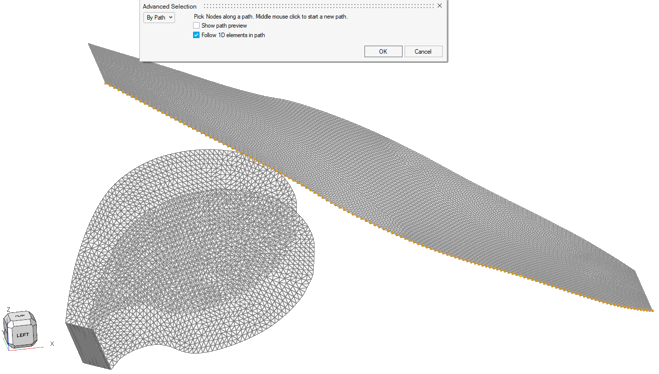Move Patches and Merge Boundary Nodes
Use the Stitching tool to attach the various patches by moving patches and merging boundary nodes.
Each patch should have materials, properties and contacts assigned.
-
From the Airbag ribbon, click the
Stitching tool.
Figure 1. 
-
On the guide bar, click
 to define stitching
options.
to define stitching
options.
- Runtime: The final time for the pre-simulation that will be run for stitching the parts.
- T File: The sampling time for time history files.
- DT Animation: The sampling time for contour results.
- Noda/Cst: A parameter for controlling the time step.
- Folds Directory: The working directory for the pre-simulation run.
- On the guide bar, click Fixed component.
- Select a component that will be fixed during the pre-simulation run. This is mandatory.
-
Set advanced selections as necessary by clicking
 on the guide bar.
on the guide bar.
- On the guide bar, click Moving edge.
- Select the boundary nodes that will move to be merged with boundary nodes of another part.
-
The By Path Advanced Selection option is active by default to select ordered
nodes for convenience.
Figure 2. 
- On the guide bar, click Target edge.
-
Select which previously selected nodes will be merged.
The number of target nodes is compared to the number of moving nodes, and the selection stops when the proper amount of target nodes is reached.
-
On the guide bar, click
Stitch.
1D elements are created and will be used by the pre-simulation, linking each moving node to its target.
-
On the guide bar, click
Proceed.
The pre-simulation deck is exported.
-
At the end of the pre-simulation run, click the satellite icon
 to load the new
position of the nodes.
The .h3d file is created. The file contains the new position of each node.
to load the new
position of the nodes.
The .h3d file is created. The file contains the new position of each node.